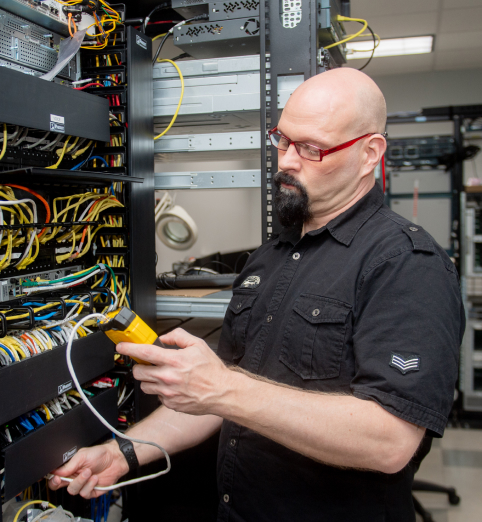Living in Atlanta, there has always been peace of mind that comes from the pleasantries of suburbia: kids play in the parks, the flowers bloom, and neighbors wave to one another in a utopia-like manner reminiscent of an episode of Leave it to Beaver.
However, with the barrage of news regarding cyberattacks that suburban utopia-like feeling has changed. It’s now an ever-looming fear consistent with something more akin to a Rutger Hauer paired with dreams of a post-apocalyptic wasteland. Seriously, should I be welding caged windows and spikes to my minivan?
Jokes aside, the point is that cyberattacks are no laughing matter. We must fight our natural urge to live in our own bubbles and to realize that this threat is all too real, and all too present to ignore.
As I’m sure everyone now knows, the recent attacks in the Ukraine had a devastating effect across the country. For just a quick list of those hit, the cyberattack crippled banks, government offices, the postal service, airports, media organizations, and even the power grid. And, it hit so hard and so fast that the people of Ukraine were left in shock as to the cause and the outcome.
To be clear, though the tone of this article may be read by some as alarmist, my retort is simple: Good! This is meant to be alarmist because this is serious stuff that can adversely affect us all.
But there is a simple way to combat all this: as an IT community let’s stop being reactionary. Now, I know what many will say to that statement. The argument will be made that security is already in place: malware detection, firewalls, etc. But, in all honesty, I will happily argue that viewpoint.
For many IT organizations, the security practices in place are those that addressed a world long gone—practices that were formed in a different era, with a different approach, and a different mindset—and solutions were implemented for the threats of the time, not the threats of today.
And as an IT business solutions company that does this all day, everyday, trust me when I say that you’d cringe to see the things we see when peering under the hood of very large companies.
So, what’s to be done? Firstly, understand the new world of cyberattacks and the associated risks. For instance, this latest attack is now believed to be far beyond that of the usual “looking for money” cyber heist. In fact, leading IT security professionals from the international Computer Science Institute in Berkley, California, have a far scarier outlook on this incident. They have reported that it’s far more likely a sophisticated attack disguised as ransomware—something that was perpetrated by a much more sophisticated hacker. And though this may or may not be driven at a nation-state level, it is not the usual kid in a hoody in mom’s basement from some 1990s hacker movie.
At the end of the day, my message is simple: contact us to discuss your security right away. I don’t say this as a sales pitch—in fact, far from it. I say this because there is a new world that has landed squarely in all our laps that we need to address and internalize now … not later.
The DDoS attacks in late 2016, the WannaCry ransomware attacks, and now the attacks this week all predict that there is something bigger on the horizon. This is why we have partnered with the world’s leading authorities on cyber security, business continuity, and robust IT infrastructure to build an effective defense for ourselves and for our clients.
I don’t want to come across as panicked or alarmist. Or perhaps, to some, a conspiracy theorist wearing a tinfoil hat—this is not what this is about. This is about being smart, prepared, and vigilant. It’s about not experiencing what others are experiencing.
And remember folks, just because you’re a little paranoid doesn’t mean they aren’t still after you.


